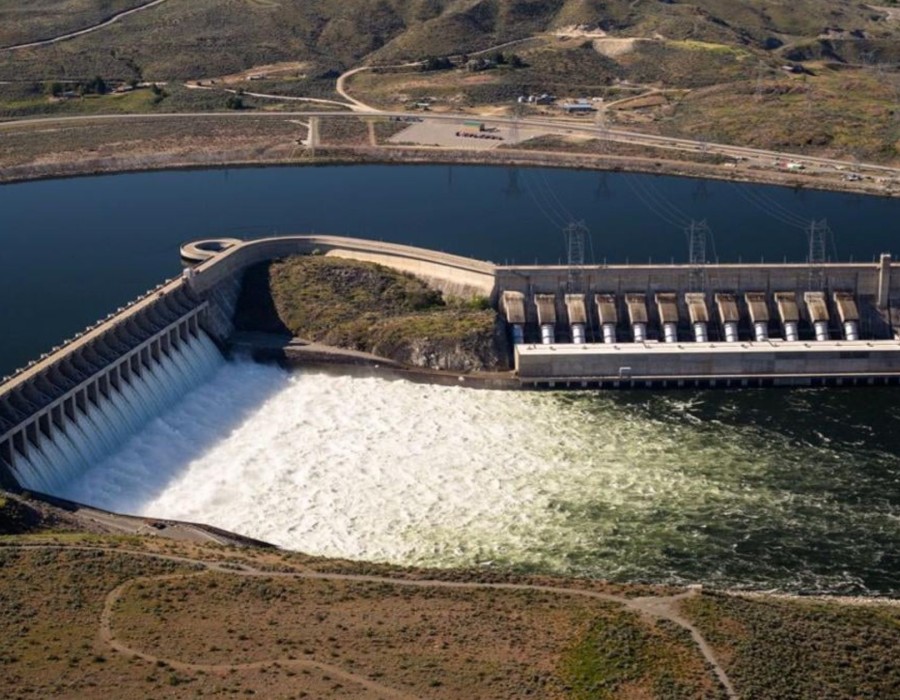Have you ever wondered what happens when fish encounter man-made barriers like dams? Migration, a crucial part of their life cycle, gets interrupted, threatening species survival and ecosystem health. Millions of fish, including salmon, eel, lamprey, and sturgeon, migrate thousands of miles each year to reach spawning grounds. Yet, climate change and human intervention are increasingly disrupting these journeys. At Whooshh Innovations, we’ve reimagined fish migration with solutions like the upstream fish passage portal to ensure aquatic species can navigate barriers effortlessly and sustainably.
Fish migration isn’t just vital for ecological balance—it’s also intertwined with economic and cultural aspects. Fisheries industries depend on thriving aquatic populations, and communities worldwide rely on fish for food and livelihoods. With more than 1,000 species impacted by barriers in rivers across the United States¹, the need for innovative fish passage systems has never been more critical.
What Makes Upstream Fish Passage Portals So Effective?
Upstream migration is essential for spawning, reproduction, and maintaining healthy populations. However, barriers such as dams, weirs, and culverts often obstruct natural pathways. These obstacles create immense stress for fish, reducing their chances of survival upon reaching spawning grounds. Our upstream fish passage portal is designed to address these challenges head-on.
Whooshh’s solution combines AI-powered fish recognition systems and pneumatic transport technology to create safe, efficient migration routes. Fish voluntarily enter the portal, where advanced sensors capture real-time data on species, size, and health conditions. After sorting, fish are transported safely through flexible pneumatic tubes over obstacles within seconds, drastically reducing stress compared to traditional fish ladders.
According to research published by NOAA Fisheries, well-designed fish passage systems can increase migration success rates by over 95%². This success highlights the importance of adapting advanced technologies in regions where human-made barriers threaten aquatic balance. Whooshh’s portal not only facilitates efficient upstream movement but also collects valuable data that supports ecosystem conservation efforts.
How Do Fish Passage Portals Revolutionize Migration Management?
What makes the fish passage portal a standout solution? Imagine a system that integrates fish monitoring, sorting, transport, and data collection into one seamless process. Our fish passage portals prioritize species-specific solutions, ensuring native fish populations thrive while invasive species are controlled.
These portals are adaptable to various environments, whether it’s a high-head dam, a small stream, or a fish hatchery. Unlike traditional systems, our portals are modular, portable, and require minimal water usage. By addressing site-specific needs and accommodating diverse species, they help restore connectivity and biodiversity across aquatic ecosystems.
Beyond migration, our portals provide real-time insights regarding fish populations, water quality, and migration behavior. Fisheries managers can use this data to make informed decisions about conservation strategies, operational efficiency, and regulatory compliance. By automating the process, Whooshh Innovations eliminates manual intervention, reducing costs and ensuring reliable outcomes.
How Does Whooshh Innovations Redefine Fish Passage?
At Whooshh Innovations, we’re not just creating fish passage systems—we’re redefining how aquatic ecosystems are managed. Our fish passage portal combines advanced imaging, real-time monitoring, and stress-free transport methods to deliver unparalleled results.
One of our flagship technologies, the FishL Recognition™ system, uses high-definition imaging and AI algorithms to analyze fish populations accurately and non-invasively. Coupled with pneumatic transport systems, this process ensures fish bypass barriers safely while maintaining optimal health.
Unlike traditional methods, which often rely on manual counting or invasive tagging, our system collects detailed data without disrupting fish populations. This data is invaluable for research institutions, conservation projects, and regulatory bodies, supporting efforts to protect biodiversity and restore aquatic connectivity.
Real-World Impact: Case Study on Columbia River Basin
The Columbia River Basin provides a compelling example of how advanced fish passage solutions can restore migration success rates. Historically, this region supported one of the largest salmon runs globally. Over the years, dam construction severely impacted upstream migration, leading to population decline.
With the implementation of innovative technologies like Whooshh’s portals, fish passage efficiency at certain dams now exceeds 95%³. These systems have facilitated smoother migration routes for salmon while collecting real-time data on species diversity, population health, and water quality. By addressing the root causes of migration disruption, Whooshh’s technology supports sustainable fisheries while balancing hydropower production.
What’s Next in Fish Migration Technology?
The future of fish migration lies in innovation. As ecosystems continue to evolve, technologies like Whooshh’s portals will bring scalability, adaptability, and data-driven insights to aquatic management. Enhancements such as adaptive fish guidance systems, integrated ecosystem monitoring, and advanced sorting technologies will redefine how fisheries are managed worldwide.
At Whooshh Innovations, we envision a world where aquatic ecosystems can thrive alongside hydropower and industrial development. We’re committed to advancing research and development to create solutions that benefit fish populations, stakeholders, and the environment alike.
Conclusion:
Upstream fish passage portals and fish passage portal solutions are more than a means of transport—they’re a bridge to preserving biodiversity and restoring aquatic ecosystems. Whooshh Innovations combines eco-friendly design and cutting-edge technology to ensure fish migration is safe, efficient, and sustainable across diverse environments.





Comments